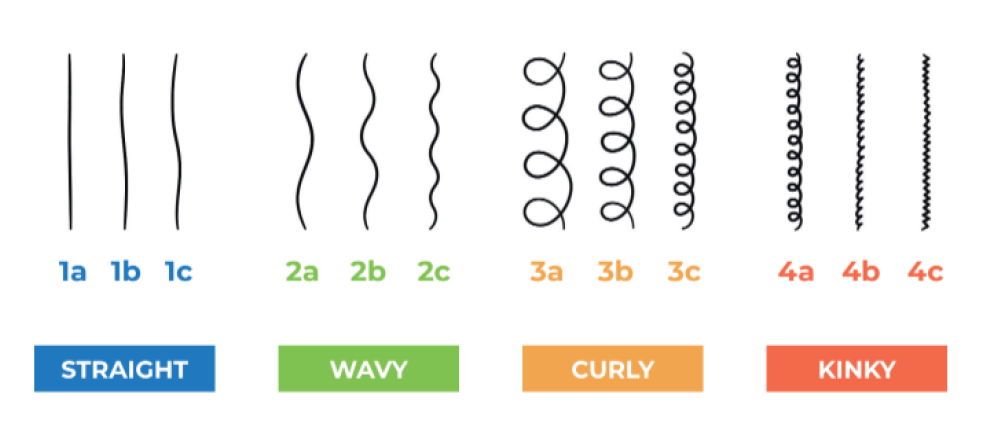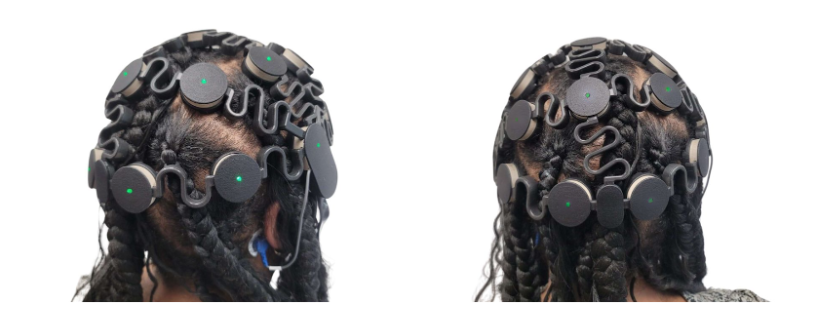Getting an EEG shouldn’t be a hassle – no matter your hairstyle. For most patients, an EEG test typically requires no special preparation. However, for individuals with curly hair, textured hair or specific hairstyles, such as braids, dreadlocks, cornrows, twists, hair extensions or coily/kinky curly hair, the setup process can be more challenging than it needs to be. Thanks to innovative technology by Zeto, there’s a solution that makes textured hair EEG accessible and efficient for everyone.
Understanding Hair Types
Before addressing the challenges and solutions, it’s important to understand that hair types vary widely based on texture and curl patterns. The commonly recognized Andre Walker Hair Typing System classifies hair into four main types:

Type 3 and Type 4 hair, in particular, tend to be thicker, curlier, or kinkier, which can present unique challenges for textured hair EEG setups. Additionally, protective hairstyles such as braids, cornrows, and dreadlocks further complicate traditional EEG setups. For many patients, even getting a test can be difficult or uncomfortable, creating unnecessary barriers to essential healthcare.
EEG and Hair Diversity: The Urgent Need for Inclusive Solutions
For decades, EEG technology has not been inclusive of everyone. Traditional EEG electrodes are designed to sit flat on the scalp, which is especially challenging for people with thick, curly hair or dreadlocks. The process can become even more difficult, requiring technologists to ask patients to alter or remove their hairstyle to achieve quality EEG data.
Imagine being told that you need to take down intricate braids or cut your dreadlocks – hairstyles often deeply tied to culture, identity, and personal expression – just to undergo an EEG. What may seem like a minor inconvenience to some can become a major obstacle to others, delaying critical diagnostic tests and adding stress to an already daunting medical experience.
This issue has disproportionately impacted patients whose natural hair types and protective hairstyles are often incompatible with the rigid requirements of traditional EEG technology. As a result, many patients have encountered frustrating barriers to accessing the care they need.
Zeto Offers Textured Hair EEG: EEGs That Work for All Hair Types
The good news is that Zeto EEG technology is removing these barriers. Zeto’s wireless textured hair EEG headsets are designed to accommodate all hair types, from straight and wavy to curly and coily, including protective styles like dreadlocks, cornrows, and braids.
Unlike traditional EEG systems, Zeto headsets do not require the use of abrasive pastes or applications of messy electrolytes to obtain accurate readings. Instead, it sits comfortably on the head, regardless of hair volume, texture, or style. This ensures that patients with textured hair or complex hairstyles no longer need to worry about altering their hair for the test.
With Zeto, EEGs are no longer a stressful ordeal but a straightforward, accessible solution for all patients.

Zeto’s Unique Electrodes
Zeto’s textured hair EEG electrodes are designed to work with a wide variety of hair types and densities. Flat electrodes are ideal for areas without hair, such as the forehead. Taller electrodes with legs are designed to navigate through thicker hair, allowing for easy placement on the scalp, even with complex hairstyles.
Zeto’s patented electrode tips seamlessly move through hair and braids without leaving behind any sticky residue. The electrodes are capable of moving past braids, cornrows, twists, or dreadlocks up to 1 inch thick, and can even work with thicker hair bundles, depending on the style.

Convenient for EEG Technologists
Zeto makes life easier for EEG technicians by eliminating time-consuming skin preparation and messy gels. The setup is quick and efficient, even for patients with type 4 kinky/coily hair, taking just 5-10 minutes at most. Zeto’s headsets come with handy light-based signal quality indicators built into each electrode that lets users know when the electrodes have a good connection (green light) or if they need a little adjustment (Red, orange, or yellow ). The adjustment is made by rotating and repositioning the electrode, to make sure they’re properly touching the scalp.
Comfortable for Patients
Zeto provides a significantly better EEG experience for patients. The setup is faster and more comfortable, with no sticky gels or adhesives to wash out afterward. There’s no need for special preparation or skin abrasion, which minimizes the risk of irritation or discomfort. Additionally, Zeto’s electrodes are single-use, eliminating the risk of cross-contamination. Patients enjoy a hassle-free experience with precise and reliable results, all without being asked to change or remove their hairstyle.
Many patients have shared that after their Zeto EEG test, they could go about their day as planned, without the need to wash or restyle their hair.
Remaining Limitations
While Zeto’s EEG technology works with most hairstyles, blocking the electrode tips from contacting the scalp may still prevent accurate recordings. However, weaves or sew-ins that allow scalp contact are generally not an issue for Zeto’s electrodes.
EEGs should be accessible to everyone, regardless of hairstyle. Zeto is proud to offer a solution that makes brain monitoring more inclusive, comfortable, and efficient. By offering innovative EEG headsets with unique electrodes, Zeto ensures that no patient is left behind due to their hair type or style.
From WR19 to Zeto ONE: Inclusivity and Reliability Across 100,000 Studies
Zeto has two innovative EEG headsets: the WR19 for EEG studies up to 6 hours and the Zeto ONE for continuous monitoring for 24+ hours. Both headsets use the same electrode technology and work seamlessly with textured hairstyles, ensuring reliable and high-quality EEG recordings.

Zeto’s commitment to accommodating various hair types and styles began with the clearance of our first-generation WR19 device in 2018. From the outset, the WR19 was capable of recording EEGs on patients with diverse hairstyles and hair types without requiring additional effort or compromising signal quality. This dedication to inclusivity and performance was carried forward into the design of our next-generation device, the Zeto ONE EEG system, launched in 2024.
Out of the 90,000 EEGs conducted using Zeto’s EEG system across over 200 healthcare facilities in the U.S., there has not been a single complaint or failure related to hair type.
Preserve the Style, Skip the Paste
To find out more about Zeto’s patient-friendly EEG technology and how it can work for you, explore our website or schedule a consultation with our team. Zeto is committed to making brain monitoring accessible for everyone, no matter your hair type or style.
We explored the compatibility of Zeto EEG with different hair types, including braids, cornrows, and kinky/coily hair, in a recent webinar. During the webinar, we also conducted live demos with various hairstyles to demonstrate how well Zeto EEG works. Be sure to check it out!
Interested in learning more about this topic?
Stay tuned for upcoming articles. If you haven’t already, subscribe to our newsletter or follow us on LinkedIn.


